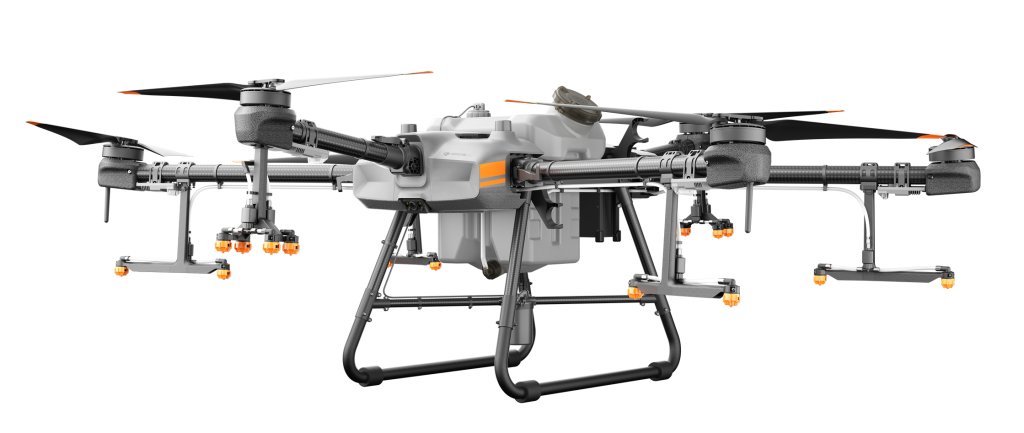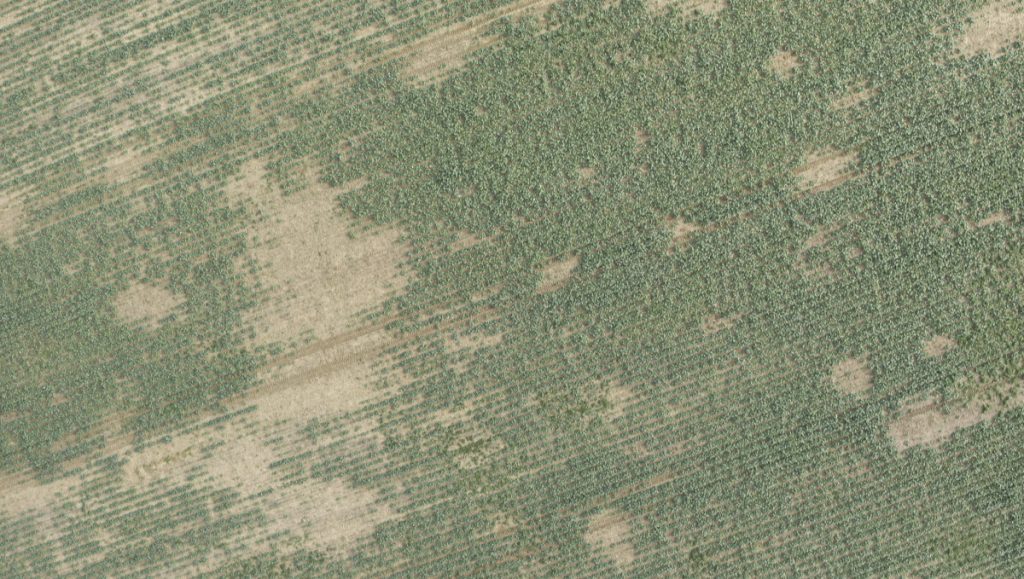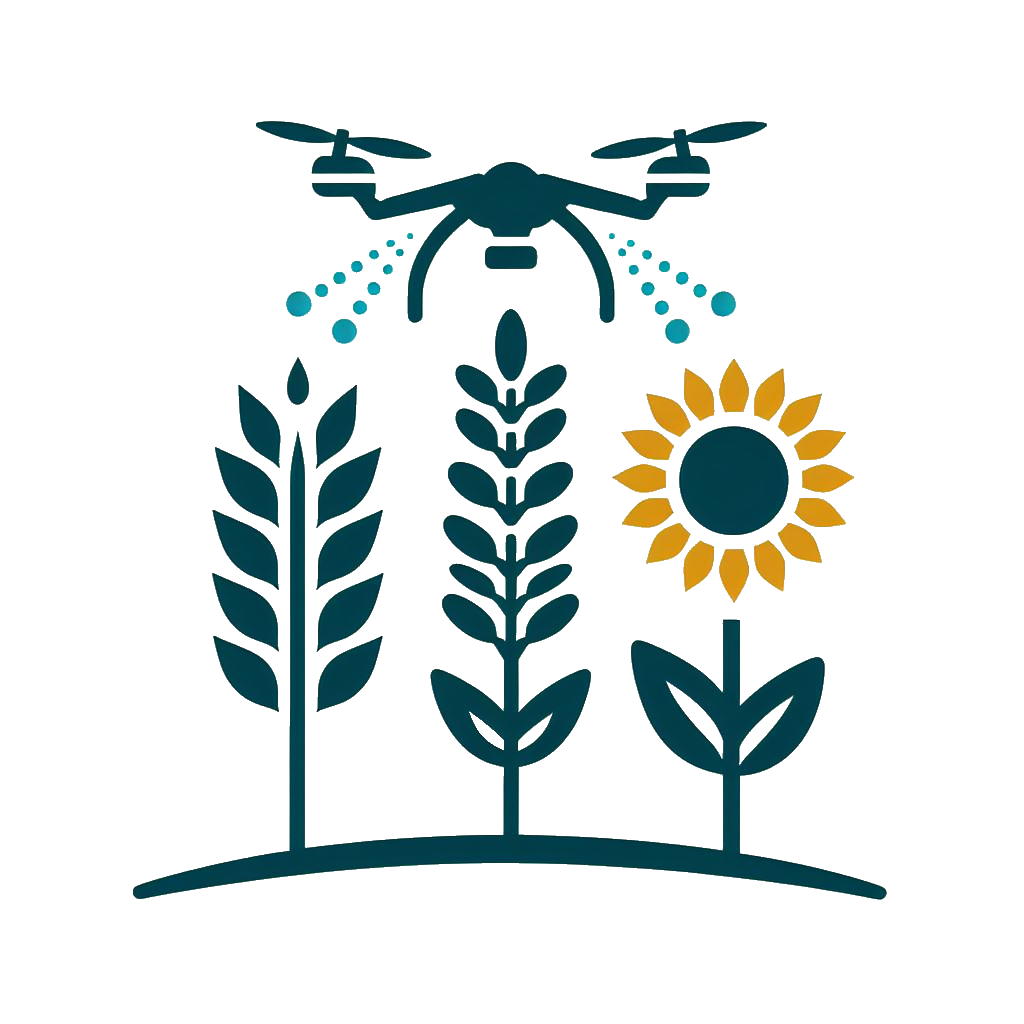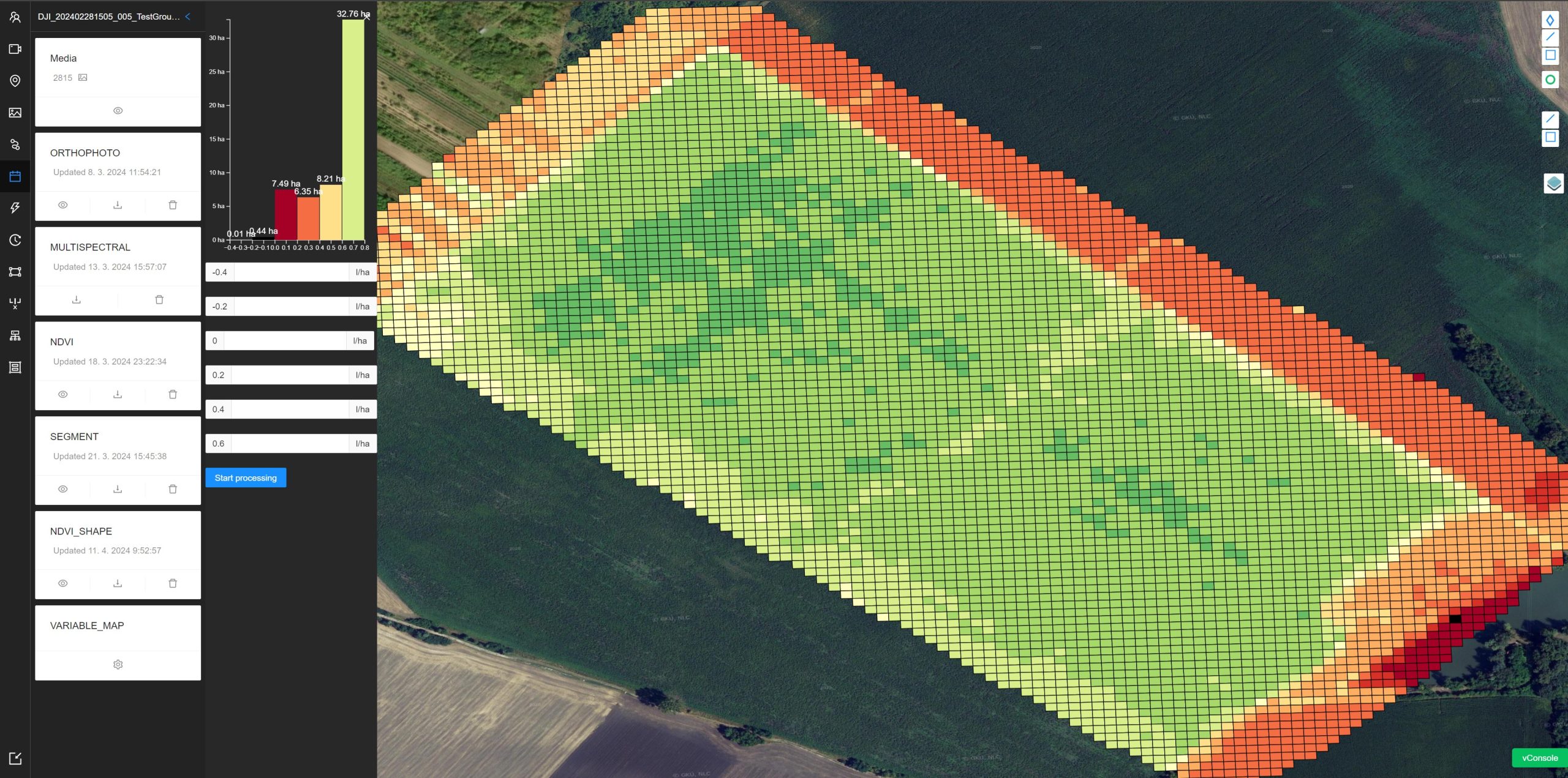Introduction
Agrip is a drone platform, that provides a comprehensive suite of features for precision agriculture. Among these, Variable Rate Application (VRA) stands out as a game-changer for optimizing fertilizer and spray usage while improving crop yields. In this case study, we explore how VRA can benefit larger farms that can afford to operate their own drones and benefit from the Agrip platform.
Problem Statement
Larger farms face unique challenges when it comes to optimizing the rates for application. Traditional uniform application methods often lead to inefficiencies, wasted resources, and uneven crop growth. Our goal is to demonstrate how VRA using DJI drones can address these challenges.
Solution: Agrip platform with DJI Drones

- Planning, Flying Analysis:
- Compact and Versatile: The Mavic 3M is a portable drone with high-resolution multispectral cameras. It can capture detailed imagery across large fields.
- Flight Planning: Using Agrip’s flight templates or automated planning, the platform can create precise flight paths based on field characteristics and use cases.
- Live Data: Livestreaming capabilities allow real-time monitoring of crop health and anomalies.
- Orthophoto Processing: Agrip processes RGB and multispectral images into orthophoto mosaics using 5G in near real-time, enabling rapid analysis even on mobile devices.
- NDVI Index: Evaluate vegetation health directly on the map, aiding in yield predictions.

- Application:
- Variable Rate Application: By integrating data from NDVI indices and other field parameters, the Agrip can prescribe variable rates for spraying or fertilization.
- AI Damaged Crops Detection: Machine vision locates damaged crops, providing actionable insights for targeted treatment.
- AI Rodent Detection: Identifies rodent holes, allowing professionals to address pest issues promptly.
- Heavy-Duty Workhorse: The DJI Agras series is designed for large-scale agricultural operations.
- Efficiency: DJI Agras covers large areas efficiently, reducing operational time and costs. Using its propellers to efficiently inject the spray into the crops results in less spray usage and focused approach.

Implementation: VRA for Larger Farms
- Field Scouting and Data Collection:
- Deploy the Mavic 3M to capture high-resolution imagery across the entire field.
- View NDVI data to assess crop health variations.
- Data Integration and Analysis:
- Agrip’s platform processes the data, creating NDVI maps and identifying damaged areas.
- Combine NDVI data with soil moisture, historical yield, and other relevant information.
- VRA Prescription:
- Based on the integrated data, the Agrip generates variable rate prescriptions.
- Adjust spraying or fertilization rates according to specific field zones (e.g., healthy, stressed, or damaged areas).
- Precision Application:
- The DJI Agras executes the VRA plan, precisely applying inputs where needed.
- Reduced input wastage and improved crop health lead to higher yields.

Results and Benefits
- Cost Savings: VRA reduces input costs by optimizing usage.
- Yield Enhancement: Targeted treatments improve crop health and overall yield.
- Environmental Impact: Reduced chemical usage benefits the environment.
- Operational Efficiency: DJI drones cover large areas quickly, saving time and labor.
Conclusion
By leveraging the Agrip platform in conjunction with DJI Mavic 3M and DJI Agras drones, larger farms can achieve precise and efficient variable rate application. Agrip’s platform integrates data seamlessly, empowering farmers to make informed decisions and maximize productivity. As technology continues to evolve, VRA will play a pivotal role in sustainable agriculture.

